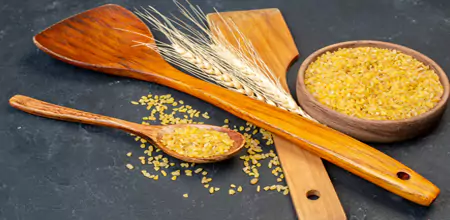Barnyard Millet, known as Kuthiraivali in Tamil, is one of the oldest cultivated grains in human history. This small-seeded cereal belongs to the millet family and has been grown in Asia for centuries. In recent years, Barnyard Millet has been making a strong comeback due to its versatility, nutritional profile, and resilience in changing climates.
What is Barnyard Millet?
Barnyard Millet (Echinochloa frumentacea) is a fast-growing crop that thrives in dry and semi-arid regions. It is mainly cultivated in India, China, Japan, and parts of Africa. Farmers appreciate it for its short growth cycle, low water requirements, and ability to grow in less fertile soils. In India, it is consumed widely during fasting seasons, particularly in certain cultural and religious traditions, as it is considered a light and easily digestible grain.
Historical Significance
Millets, including Barnyard Millet, were dietary staples long before rice and wheat became dominant. Archaeological evidence suggests that millets have been cultivated for thousands of years in the Indian subcontinent and East Asia. Barnyard Millet’s endurance over centuries highlights its adaptability and nutritional importance.
Nutritional Value of Barnyard Millet
Barnyard Millet is rich in essential nutrients while being naturally gluten-free, making it a popular choice for people seeking healthier alternatives to refined grains.
- Carbohydrates: Provides slow-releasing energy that helps maintain steady blood sugar levels.
- Protein: Offers plant-based protein suitable for vegetarian and vegan diets.
- Fiber: Supports digestive health and prolongs satiety after meals.
- Iron: Contributes to healthy blood and reduces the risk of iron deficiency.
- Magnesium: Aids in muscle function and energy production.
- Calcium: Supports bone strength and overall skeletal health.
Compared to polished white rice, Barnyard Millet contains significantly higher fiber and micronutrients, making it an excellent substitute in daily meals.
Health-Friendly Aspects
While Barnyard Millet is not a medicine, incorporating it into a balanced diet can contribute to overall well-being. Its low glycemic index makes it a suitable grain for people who prefer steady energy without rapid sugar spikes. The fiber helps maintain digestive health, and the rich mineral content supports body functions in the long term.
Culinary Uses of Barnyard Millet
Barnyard Millet can be cooked in a variety of ways, making it a versatile ingredient in the kitchen:
1. As a Rice Substitute
Cooked Barnyard Millet can replace rice in most dishes. It pairs well with curries, stews, and sautéed vegetables.
2. Breakfast Dishes
Popular breakfast recipes include Barnyard Millet upma, pongal, and idli. Its mild flavor blends well with spices, herbs, and vegetables.
3. Baking and Snacks
When ground into flour, Barnyard Millet can be used in baking flatbreads, pancakes, muffins, and cookies. It can also be made into healthy snacks such as laddoos or savory mixtures.
4. Festive Foods
In India, during Navratri and other fasting festivals, Barnyard Millet is prepared as a light porridge or khichdi, often flavored with cumin, ginger, and ghee.
Cooking Tips
- Rinse the millet thoroughly before cooking to remove any dust or impurities.
- For a fluffy texture, use a water-to-millet ratio of about 2.5:1 and cook until the grains separate.
- Soaking the millet for 30 minutes before cooking can reduce cooking time and improve digestibility.
- Experiment with spices, herbs, and vegetables to enhance flavor.
Barnyard Millet in Sustainable Agriculture
Barnyard Millet is a hardy crop that requires minimal water and can thrive without heavy use of chemical fertilizers. This makes it an eco-friendly choice for both farmers and consumers. As climate change challenges traditional farming, resilient crops like Barnyard Millet are gaining importance for food security and sustainable rural livelihoods.
Economic Importance
For small-scale farmers, Barnyard Millet offers a reliable source of income. It can be intercropped with legumes, helping improve soil fertility naturally. Its short maturation period also allows farmers to grow multiple crops in a year, maximizing land use.
How to Include Barnyard Millet in Your Diet
Switching from refined grains to Barnyard Millet can be gradual. Start by replacing part of your rice or wheat-based meals with millet dishes. Over time, you may discover new recipes and cooking styles that make it a staple in your kitchen.
Simple Barnyard Millet Porridge Recipe
Ingredients: - 1 cup Barnyard Millet - 2.5 cups water or milk - 1 tablespoon jaggery or sugar (optional) - Cardamom powder to taste - Nuts and raisins for garnish Instructions: 1. Rinse the millet thoroughly. 2. Boil water or milk in a pan. 3. Add millet and cook on low heat until soft. 4. Stir in sweetener and cardamom. 5. Garnish with nuts and raisins before serving.
Storage and Shelf Life
Store Barnyard Millet in an airtight container in a cool, dry place. It typically has a shelf life of up to six months, though storing it in the refrigerator can extend its freshness, especially in humid climates.
Conclusion
Barnyard Millet is more than just an ancient grain – it is a sustainable, nutritious, and versatile food that fits seamlessly into modern diets. From traditional porridge to innovative baked goods, it offers countless possibilities for delicious and wholesome meals. Whether you are exploring new grains for health, culinary variety, or environmental reasons, Barnyard Millet deserves a place in your pantry.
